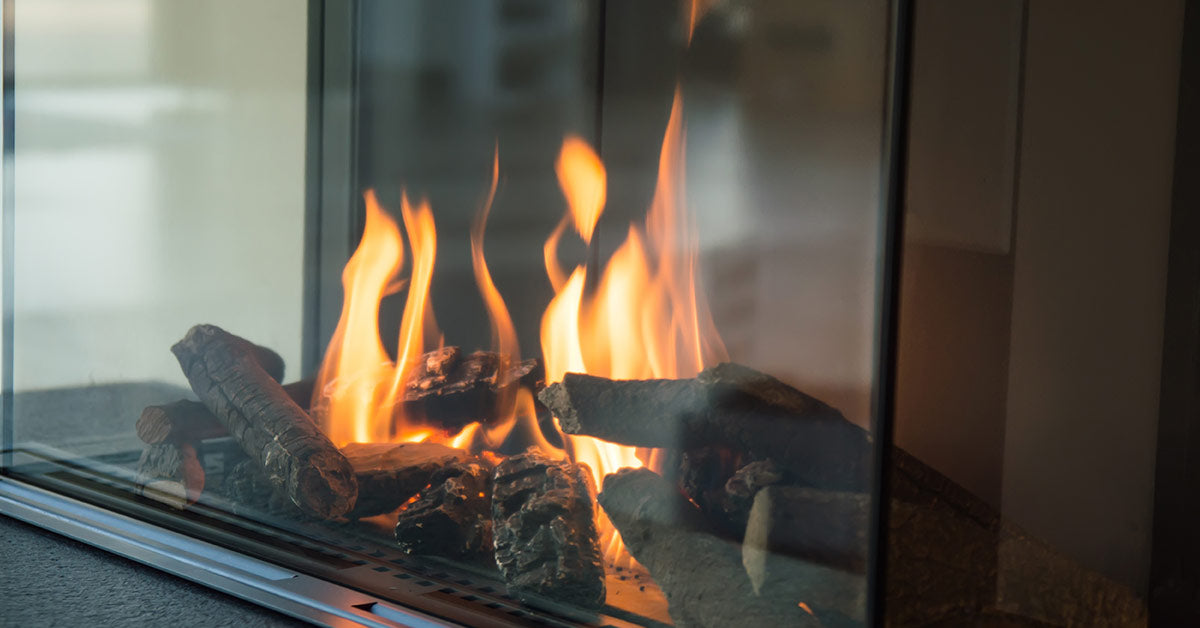
How to Use Vent-Free Gas Fireplaces Safely
Darrell PawsonAs a homeowner, it’s important to stay warm during the colder winter months, but it’s essential to remain safe while doing so. If you have a vent-free gas fireplace, or are considering installing one in your home, you’ve probably heard some safety concerns about how they operate. While vent-free fireplaces are a great source of heat, it’s important to know how they work, so you can use them safely all winter long.
How do Vent-Free Gas Fireplaces Work?
Before we dive into the safety features of vent-free fireplaces, we’re going to take a closer look at how they run. Vent-free fires, also known as ventless gas fireplaces, produce artificial flames that still produce warmth. These flames and heat are produced by the pre-existent propane or natural gas connection you have in your home. With a natural gas connection, your fireplace installation technicians can connect the fireplaces valves from your unit to the control panel and existing gas lines in your home.
From there, vent-free gas fireplaces supply your home with continuous heat by reusing the gases that flow throughout your room. Because they do not require a source to expel additional heat outside of your home like a vented fireplace or wood-burning fireplace, vent-free gas fireplaces send heat throughout an allotted area. Once the room is warm, the fireplace takes fresh oxygen into its base, reheats it, and expels it back into your living space. Because of this low maintenance way to heat your room, vent-free gas fireplaces are an affordable way to heat your home.
Vent-Free Gas Fireplace Safety
While most wood-burning log sets and fireplaces produce live flames, vent-free gas fireplaces do not. Gas appliances pose fewer risks and safety hazards and have no long-term maintenance compared to wood stoves. However, they have their own safety concerns that are far different than wood-burning stoves.
Most fireplaces have a ventilation system, which means they are able to release the air and heat they produce during combustion. However, because ventless fireplaces do not, their heat combustion is not released outside. The main difference between vented and unvented gas fireplaces is that unvented gas burns a very low amount of gas, so there aren’t extreme safety risks that come with operating gas fireplaces.
Any gas burning fireplace has its own challenges, which is why it’s necessary to have the proper safety precautions in place. If you have a vent-free gas fireplace, items like carbon dioxide monitors can keep your family safe and secure while your fireplace is running. By installing these in your main living area and hallway, you can make sure there is enough oxygen circulating throughout your living room.
Another way to monitor your home oxygen level is by using an Oxygen Detection System. These are typically included in your vent-free gas fireplace system. This system is designed to automatically shut off the fireplace if it notices oxygen levels are too low in your living area.
Are Vent-Free Gas Fireplaces for you?
While many factors weigh into what gas fireplace model is best for you, there are plenty of safety procedures in place that make vent free gas fireplaces ideal for homeowners. However, a few additional things to consider are:
- Because combustion isn’t released in a vent-free fireplace, occasionally you can smell the gases coming from your fireplaces.
- Vent-free gas fireplaces do not produce more than 40,000 BTUs for additional safety purposes, so they produce less heat.
- Their ventilation method means their flames aren’t as large or realistic looking like direct vent fireplaces, or gas fireplace inserts.
- You must have vent-free gas logs within your unit.
These are important factors to consider before buying a vent-free fireplace. However, vent-free gas fireplaces require less installation work, are more environmentally friendly, and still produce an adequate amount of heat. Plus, there are plenty of safety procedures and indoor air monitoring devices that make vent-free fireplaces safe and reliable for all families.
